#LE POETIC CINEMA!!!!!!!!!!!!!!!!!!!!
Photo




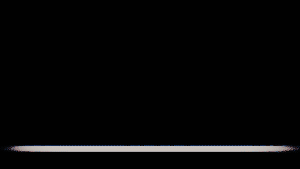





2017 vs. 2022
#*#buzzfeed unsolved#buzzfeedunsolvededit#ghost files#ghostfilesedit#watcher#watcher entertainment#watcheredit#ryan bergara#shane madej#LE POETIC CINEMA!!!!!!!!!!!!!!!!!!!!
12K notes
·
View notes
Text

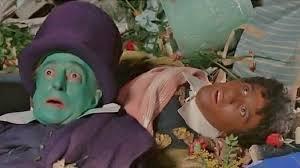
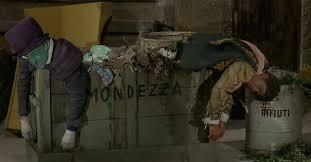
2 notes
·
View notes
Text
Ma parliamo di Sportitalia che inconsapevolmente riprende la nuova compagna di Totti e una sua amica che, mentre sono sugli spalti a vedere la partita di baby Totti, fanno vedere a Totti la storia instagram di Ilary Blasi facendo le facce... perché nella storia si vede Ilary presente in quel momento a quella stessa partita (x)
#ero in tumblr detox ma questa volevo condividerla perché mi ha uccisa#sportitalia che le riprende proprio in quel momento... poetic cinema#ilary è in trend su twitter aksjsksj
3 notes
·
View notes
Text
Ultimo album di tananai
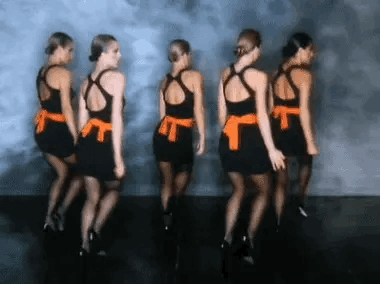
2 notes
·
View notes
Text
Can we talk about the symbolism of them clumsily smashing the jars of cherries during the Pantry Scene???? Poetic fucking cinema
#calliope x juliette#first kill netflix#literally breaking cherries like????#the blood and sex symbolism#the broken glass#the danger of the relationship#clumsiness and wrecklessness of first all consuming love#the biting and staking???#aside from the obvious penetration imagery#orgasms have been called le petite morte or the little death#poetic cinema#absolutely fucking incredible#genius even
6 notes
·
View notes
Text

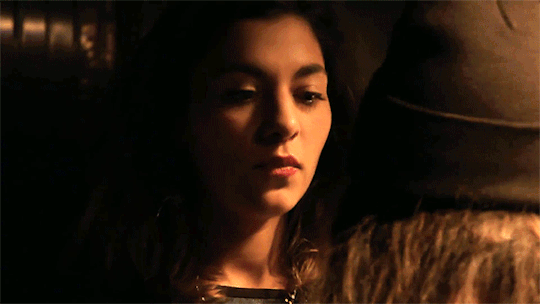




Le Ring - Deezer France
#poetic cinema 👁👄👁#this right away comes from a romantic movie ͡° ͜ʖ ͡°#i will go down with this ship#elijay#l.e.j#lucie elisa juliette#lucie lebrun#elisa paris#juliette saumagne#le ring#live session
0 notes
Note
There is a difference between Bollywood and Bombay cinema?
listen, subcontinental cinema began in bombay; the very first exhibition of the lumieres' cinematographe was held there in 1896, a few months after its debut in paris, 1895. this event predates the discursive existence of bollywood and hollywood. shree pundalik and raja harishchandra, the films that are generally considered the very first subcontinental features were also exhibited there first.
subcontinental cinema under british colonialism was produced in certain metropolitan centers such as lahore, hyderabad, and calcutta; bombay was just one of them. in 1947, when the indian nation state was formally inaugurated, the idea of a "national cinema" began forming, but given the cultural and linguistic heterogeneity of the indian union, this was quite untenable. regional popular cinemas flourished well into the 1950, 60s, 70s, and 80s and various art cinemas began taking shape alongside.
under the economy that i'm going to completely elide as "nehruvian "socialism"" bombay cinema focused on broadly "socialist" themes, think of awara (1951), do beegha zameen (1953), pyaasa (1957), all of which focus on inequality in indian economy and society from different perspectives. these films were peppered in with historical dramas, and adaptations from literature, but the original stories tended towards socialist realism. reformist films centering the family generally waxed poetic on the need to reform the family, but i haven't seen enough of these to really comment on them.
the biggest hit of the 70s, sholay (1975) was about two criminals, posited as heroes fighting gabbar singh who was attacking village folk. deewar (1975) also had two heroes, and the stakes were the two brothers' father's reputation; the father in question was a trade union leader accused of corruption.
"alternative cinema" included mani kaul's uski roti (1969) and Duvidha (1973) both of which were situated away from the city. then there's sayeed mirza and his city films, most of them set in bombay; arvind desai ki ajeeb dastan (1978), albert pinto ko gussa kyun aata hain (1980), saleem langre pe mat ro (1989) which are all extremely socialist films, albert pinto was set in the times of the bombay textiles strike of 1982 and literally quotes marx at one point. my point is that bombay cinema prior to liberalization was varied in its themes and representations, and it wasn't interested in being a "national cinema" very much, it was either interested in maximizing its domestic profits or being high art. note that these are all hindi language films, produced in bombay, or at least using capital from bombay. pyaasa, interestingly enough is set in calcutta, but it was filmed in bombay!
then we come to the 1990s, and i think the ur example of the bollywood film is dilwale dulhania le jayenge (1995) which, in stark contrast to the cinema that preceded it, centered two NRIs, simran and raj, who meet abroad, but epitomize their love in india, and go back to england (america?) as indians with indian culture. this begins a long saga of films originating largely in bombay that target a global audience of both indians and foreigners, in order to export an idea of india to the world. this is crucial for a rapidly neoliberalizing economy, and it coincides with the rise of the hindu right. gradually, urdu recedes from dialogue, the hindi is sankritized and cut with english, the indian family is at the center in a way that's very different for the social reform films of the 50s and 60s. dil chahta hai (2001) happens, where good little indian boys go to indian college, but their careers take them abroad. swadesh (2004) is about shah rukh khan learning that he's needed in india to solve its problems and leaves a job at NASA.
these are incidental, anecdotal illustrations of the differences in narrative for these separate eras of cinema, but let me ground it economically and say that bollywood cinema seeks investments and profits from abroad as well as acclaim and viewership from domestic audiences, in a way that the bombay cinema before it did not, despite the success of shree 420 (1955) in the soviet union; there were outliers, there always have been.
there's also a lot to say about narrative and style in bombay cinema (incredibly diverse) and bollywood cinema (very specific use of hollywood continuity, intercut with musical sequences, also drawn from hollywood). essentially, the histories, political economies, and aesthetics of these cinemas are too differentiated to consider them the same. bombay cinema is further internally differentiated, and that's a different story altogether. look, i could write a monograph on this, but that would take time, so let me add some reading material that will elucidate this without sounding quite as fragmented.
bollywood and globalization: indian popular cinema, nation, and diaspora, rini bhattacharya mehta and rajeshwari v. pandharipande (eds)
ideology of the hindi film: a historical construction, madhav prasad
the 'bollywoodization' of the indian cinema: cultural nationalism in a global arena, ashish rajadhyaksha
the globalization of bollywood: an ethnography of non-elite audiences in india, shakuntala rao
indian film, erik barnouw and s. krishnaswamy (this one's a straight history of subcontinental cinema up to the 60s, nothing to do with bollywood, it's just important because the word bollywood never comes up in it despite the heavy focus on hindi films from bombay, illustrating my point)
431 notes
·
View notes
Text
So Jean is a 100% a Mozart L’Opéra Rock fan and I can prove it :
First things first, he’s french, no explanation needed for that one. Je sais de quoi je parle
Second, have you seen him ?
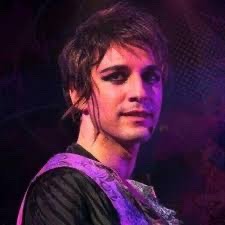



Third, this is definitely a costume choice, a clear nod to it (specially because Jean’s goes well with Greta’s, which means that’s also an interest they both share)



Fourth, et pas des moindres, Mozart L’Opéra Rock’s acronym is MOR which sounds exactly like Mort (death), and guess who’s immortal? Exactly!
Five, the lyrics! There could be many examples, but let’s take the title who goes very well with his power: Vivre À En Crever. This:
S'il faut mourir, sur nos stèles je veux graver
Que nos rires ont berné la mort et le temps
[If I have to die, on our headstones I want to engrave
That our laughter fooled death and time]
DEATH AND TIME. DEATH (Jean) TIME (Greta). Poetic cinema.
I’ll leave it here for today but I’m right.
#the french jumped out#suddenly I was a child/teenager again#just think about it#noi siamo leggenda#Noi siamo leggendwatch#MOR#mozart l’opéra rock#if I could make edits I’d do soooo many to these songs#also the songs J’accuse mon père and Victime de la victoire…#*ma#ET LE BIEN QUI FAIT MAL#bon faites moi taire ça va plus là
15 notes
·
View notes
Text
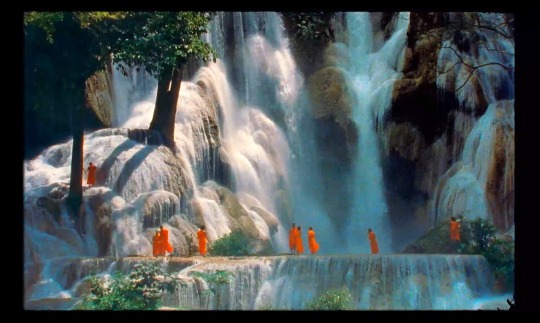
Movies I watched this week (#172):
"May I watch you eat?"
The taste of things is the latest French 'Food-porn' movie, following the recipe of so many before it, and paying homage especially to 'Babette's Feast', with Juliette Binoche playing the simple cook Stéphane Audran in a similar style. They knew what they were doing, romanticizing the 'olde thyme' vision of culinary bliss, making it like a summertime Renoir tableaux [but without any of the dozens of assistants needed to chop the wood, peel the potatoes, pluck the geese, and do the dishes]. Food as love.
I saw it on the same day I read this article about 'The Hottest Restaurant in France', which got me in the mood.
🍿
"I'm sorry. Please forgive me. Please forgive me..."
Samsara is not Ron Flicke's film of the same name (him of the The Qatsi Trilogy). But this 2023 film too is a meditative, spiritual essay about life, death and change. It specifically tells about the Buddhist idea of re-incarnation.
Like the Italian poem 'Le quattro volte' it transforms the philosophical concept of 'Bardo' into a visual story about a bed-ridden old Laotian woman who turns into a new-born goat in Africa after her death. And like Philip Gröning's patient 'Into Great Silence', it follows the simple life in a monastery, quietly and poetically. (Photo Above).
It tells two separate stories: A young boy reads from 'The Tibetan book of the Dead' to a dying woman in a village in Laos. And exactly at midpoint, there's an unexplained, abstract 2001 "Star Gate" light show, where the (Spanish) director asks the audience to close their eyes, and get lost in the vortex with her for about 15 minutes. Long stretch of strobe lights and strange dead sounds, as her soul travels though the afterlife into new birth. Then her spirit transmutes into an another form, as a pet goat for a young Muslim girl in Zanzibar. It's a fragile, silent and unfocused vision about the circle of life.
🍿
Thoroughbreds, my second unsettling thriller by Cory Finley (after 'Bad Education'), his accomplished debut feature. It tells of two rich, psychopathic Connecticut girls who scheme to murder, a-la Raskolnikov, the mean father of the richer one. Terrific direction choices and well-made execution, but I can't stand the young, unlikable actresses (and actors!), and their emotionally-stunted upper-class coldness left me cold too.
I loved JunePictures's lovely animated logo at the beginning!
🍿
Invention for Destruction, a Jules Verne steampunk'ish adventure fable. It was made by Karel Zeman, the "Czech Méliès", in 1958, and is considered "the most successful film in the history of Czech cinema". It's a fantasy sci-fi story that includes rollerskating camels, underwater biking pirates, a giant man-eating octopus, submarines with duck-foot paddles, Etc. It mixes real-life acting with special effect Victorian engravings and animation, including traditional, cut-out, and stop-motion, along with miniature effects and matte paintings. 4/10.
🍿
2 by French feminist Germaine Dulac:
🍿 Dulac was a radical, impressionist, avant-garde film-maker who had made ground-breaking surrealist silent films even before Buñuel and Dalí made 'The Andalusian Dog'.
The Smiling Madame Beudet (1923) is a strong feminist story of an intelligent woman unhappily married who's dreaming of killing her boorish husband. It includes a literal Chekhov's gun. [*Female Director*].
🍿 The Seashell and the Clergyman is based on an experimental story by avant-garde artist Antonin Artaud. A year before 'Un Chien Andalou', it's just as opaque & untamed. Anybody interested in early Buñuel, should visit her films. It's about the "erotic hallucinations of a priest lusting after the wife of a general." Distorted images, bizarre fantasies, impolite subversions... [*Female Director*].
🍿
Another silent era classic, made by a towering pioneer, Alice Guy Blaché's 1906 The Life of Christ. [On IMDb, Alice Guy is credited with directing 464 (!) films, producing 32 and writing 18!]. Composed of 25 individual tableaux, telling of mostly his last days, and noted for her focus on his mostly women followers. The poor baby who had to play Jesus in the manger!... [*Female Director*].
🍿
Crack-up, a confusing 1946 Film Noir, made by a second-rated director, with a terrible script and bad acting all around, including the miscast Pat O'Brien. A stolen art piece, not up to 'The Maltese Falcon' levels. 2/10.
🍿
"I was drugged and left for dead in Mexico, and all I got was this stupid T shirt."
A single re-watch this week: the sophisticated mystery The Game, again♻️. Still my favorite David Fincher film, even more than 'The social Network'. With the magnificent Memory montage opening, which was also copied successfully by the show 'Succession'. Chasing a "White Rabbit", a birthday present to remember...
🍿
2 more selections from the US National Film Registry:
🍿 I am somebody is a 1970 documentary about a strike by 400 black hospital employees (all but 12 women) for better pay in Charleston, South Carolina. Racist discrimination against poor blacks in Amerika is so appalling and so deep, it's hard to watch. The fight for equality and civil rights never ended. 9/10. [*Female Director*].
🍿 Jammin' the Blues is a 1944 Warner Bros. jazz short featuring Lester Young and (new to me) singer Marie Bryant. Oscar nominated in 1944. 'Smokin'!
🍿
I used to really like British magician Darren Brown, and saw many of his shows. Pushed to the edge (2016) is a disturbing experiment in social compliance, a-la Stanley Milgram, taken to the extreme. With dubious morality, he manipulates an unsuspecting guy to push another man from the roof of a building. But the more elaborate the set up, the more uncomfortable it is to watch it.
🍿
Popstar: Never Stop Never Stopping, a lame, loud, shallow music mockumentary by The Lonely Island. It had only one good number, "Fucked Bin Ladin" (which came at 46:00, exactly one hour before the end, so they did follow some script writing rules after all..) and about one million celebrity cameos, including Ringo Starr and Paul McCartney. 2/10.
🍿
In They're Made Out Of Meat (2005) two aliens meet in a night Diner. One of them tell the other, dressed in St. Pepper-type uniform that he discovers that all people on this planet are "made out of meat". It's a cute concept, but that's the whole thing, and there's not more to it.
RIP, Terry Bisson!
🍿
Semiotics of the Kitchen was an angry installation piece by artist Martha Rosler, at the heights of the second wave feminism years (1975). A parody of a cooking show, where the host gets more and more agitated. [*Female Director*].
🍿
(My complete movie list is here)
3 notes
·
View notes
Note
I wanna ask about a movie/movies that feel like a poem to you, not the other numbers.
oh, anon what a wonderful question! i loved thinking about it. i wasn't sure if you meant a poetic script or poetic visual language or films that combine both, so i went with all of the above haha. but here's my personal little list of actual poetic cinema. i can't really explain these.
city lights (1931)
the shop around the corner (1940)
goncharov (1973)
taxi driver (1976)
blade runner (1982)
birdy (1984)
dead poets society (1989)
the truman show (1998)
the virgin suicides (1999)
le fabuleux destin d'amelie poulin (2001)
big fish (2003)
eternal sunshine of the spotless mind (2004)
v for vendetta (2005)
brokeback mountain (2005)
sunshine (2007)
never let me go (2010)
hugo (2011)
mommy (2014)
mad max: fury road (2015)
crimson peak (2015)
moonlight (2016)
the shape of water (2017)
loving vincent (2017)
at eternity's gate (2018)
1917 (2019)
portrait de la jeune fille en feu (2019)
parasite (2019)
the green knight (2021)
send me asks about films or something idk
#i could prob. keep going lbr but i had to stop somewhere#as a general rule of thumb tho i'd say guillermo's films are all poems and i struggled not to put them all on there <3#about me#films
31 notes
·
View notes
Photo

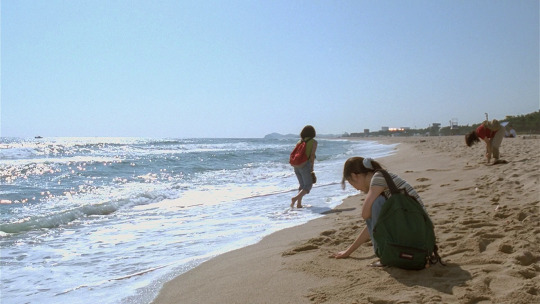
At the end of Les Mots et les choses, his breathtaking tour through four centuries worth of epistemological structures and institutional practices, Michel Foucault ruminates on the possible outcome of the modern episteme. Since the nineteenth-century, "man" has been veering inexorably towards an ontological crisis in which his status as biological, economic, and philological actor has become obsolescent, eclipsed by the organizing principles comprising objective language. ......The final paragraphs of Foucault's text thus recast his earlier arguments about the recent invention of "man" in a grim, premonitory pallor, and speak of humankind being erased "like a face drawn in the sand at the edge of the sea."
Near the beginning of Hong Sang-soo's cryptic film The Power of Kangwon Province (1998), a seemingly trivial scene lends visual texture to this idea of erasure. Not long after her arrival to the Korean seaside resort Kangwon-do, Chi-suk, a twenty-two year-old college student, accompanies her schoolmates to a beach where she bends down and casually draws something in the sand. Perhaps her sketch is a message, a signature, maybe even a Foucauldian face awaiting its salty demise. Or perhaps it is simply an empty gesture, a mindless doodle to kill time. The ambiguity of her textual inscription is left intact thanks to the static camera's emphatic detachment from the proceedings. Should we construe this mark, this semiological riddle, as a new wrinkle in the fabric of post-structuralist subjectivity, an already poignant if quietly understated beach scene is unexpectedly imbued with significance--manifesting some of the textual and industrial tensions unique to a now-internationally acclaimed and generically promiscuous South Korean cinema through an act of erasure. Before the breaking surf rolls in to dissolve the sand-script, Chi-suk wipes away the image, robbing the spectator of a glimpse into this character's troubled psyche while setting an early precedent for other enigmatic, quickly erased compositions throughout the film.
-- South Korean Film Genres and Art-House Anti-Poetics: Erasure and Negation in The Power of Kangwon Province (David Scott Diffrient, 2003)
Hong Sang-soo
- The Power of Kangwon Province
1998
#hong sang soo#hong sangsoo#the power of kangwon province#korean film#1998#michel foucault#les mots et les choses#face in the sand#홍상수
82 notes
·
View notes
Text

I posted 595 times in 2022
That's 555 more posts than 2021!
58 posts created (10%)
537 posts reblogged (90%)
Blogs I reblogged the most:
@tired-twili
@bahbahhh
@punishandenslavesuckers
@pocketseizure
@aheavenscorner
I tagged 296 of my posts in 2022
Only 50% of my posts had no tags
#botw - 79 posts
#loz - 79 posts
#link - 70 posts
#zelink - 62 posts
#totk - 39 posts
#legend of zelda - 37 posts
#breath of the wild - 37 posts
#zelda - 31 posts
#tears of the kingdom - 26 posts
#bahbahhhwrites - 25 posts
Longest Tag: 121 characters
#played botw for approximately 2 seconds to beat a shrine for my friend and i was overcome with the urge to draw him again
My Top Posts in 2022:
#5
WIP Wednesday
line art for “As Above, So Below” totk brain rot
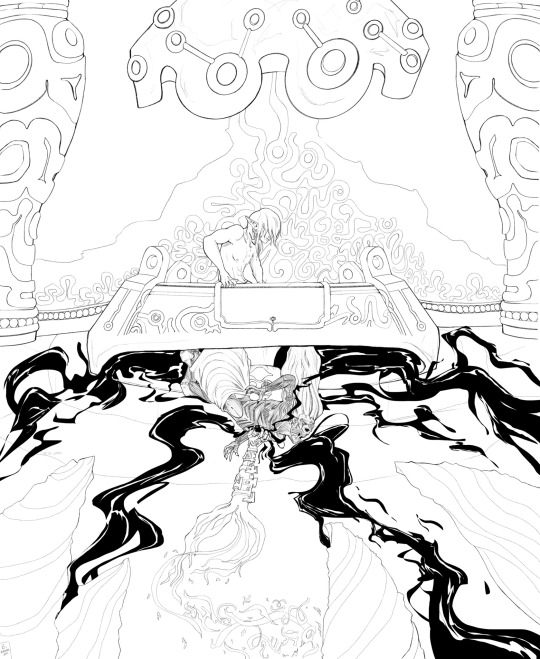
[finished piece here]
582 notes - Posted November 23, 2022
#4

Link is about to RAGE.
And then he uses it to bring Zelda back THE END
[for @zelinkcommunity weekly prompt "tears"]
736 notes - Posted September 19, 2022
#3

There's a grief that can't be spoken
There's a pain goes on and on
Empty chairs at empty tables
Now my friends are dead and gone
Les Misérables
857 notes - Posted December 14, 2022
#2

As Above, So Below
[Line art here]
Notes under cut
big shout out to @newtsnaturethings who does amazing nature studies and inadvertently helped me make stone look kinda like stone.
@manxden posted a nice summary of the battery theory. It is one of my favorite theories out there. The idea Ganondorf is the source of the power that saves Link, the hero meant to destroy him. Poetic cinema. I made a rambly post back in September that inspired this piece. You can read the full chaos here but in summary:
LONG AGO ganondorf is sealed and everyone thinks problem-solved but THEN they realize how much spirit/life energy he emits and the Royal Family orders the Sheikah to expand tech around it. What they don't anticipate is battery acid - malice. Monsters start appearing but they have the tech and just wipe them out without looking for the source. The more they use the spirit energy, the more malice is created in the sealing chamber. THIS is where get the events of 10,000 years ago. First Calamity Ganon appears...they go back to the old equation (goddess blood princess plus hero) WITH tech/Divine Beasts and beat back the Calamity. Again, this doesn't fix the problem. The Royal Family decides to banish "Sheikah" tech and like a nuclear plant meltdown, they just bury everything and hope that fixes it.
Because spirit energy is not being used during this time, Malice builds much slower. Takes 10,000 years for another Calamity to form but he's smarter this time because at his core he is a PERSON in stasis who remembers everything that was done to him.
BOTW happens.
The history of the royal family of Hyrule is also the history of Calamity Ganon
I love this line and hope it’s expanded upon in TotK.
2,416 notes - Posted November 25, 2022
My #1 post of 2022


Hello, little Hylia...
4,528 notes - Posted September 14, 2022
Get your Tumblr 2022 Year in Review →
#tumblr2022#year in review#my 2022 tumblr year in review#your tumblr year in review#Bahbahhhart#bahbhahhwrites
6 notes
·
View notes
Text
Le sciure schifate mentre Rosa Chemical canta assolutamente poetic cinema
3 notes
·
View notes
Text
Your Novel in Martial Arts
One of many top three Chinese fighting methods fiction copy writers, Gu Lengthy (1937-1985) wrote sixty-nine books in a job spanning mph years. Lots of copies in his catalogs have been bought, and many of them have been frequently adapted intended for TV or perhaps cinema. His other essential novels have the Compassionate Swordsman and the Merciless Sword (1970), The Orchid at Midnight (1979) and Search Hawk, Casino Game (1984). At the age of forty-eight, he past away of liver disease caused by high alcohol alcohol consumption. Rebecca Nasiums. Tai received her masters degree out of University of California, Los Angeles. She really likes reading excursion fiction and watching martial arts training drama.
One of his missions, Xiao (the Eleventh Son, referred to as Great Bandit) meets Shen, the fairest woman inside martial universe. By the are going to of destiny, he protects Shen repeatedly, which crops the seed of love through both of them. Nevertheless , Shen can be married to your rich son who is likewise an outstanding martial artist. Almost like things are not complicated more than enough, Xiao features his unique secret baver, Feng, a beautiful swordswoman along with a quick state of mind. Xiao is definitely drawn into a messy guard a popular saber, the Deer Carver, and is suspect of stealing it. Xiao finds out the fact that the person who has set him up is mostly a mysterious child with a great angel's experience and a fabulous devil's center. Before he can pursue any more, Shen's nanna is murdered, and Xiao is named the killer. It would appear that things are rotating out of control?
The following are some reviews made by a variety of foreign readers.
This book certainly is the only official translated wuxia novel in by the Delayed Gu Extended (Ku Extended, Ku lung) available in English language to date. Gu Long is among the three very best wuxia copy writers ever, therefore having a person his works of fiction finally being recognized is indeed wonderful. Whilst comparing that to additional translated wuxia novels happen to be rather unfair, because Gu Long provides his private distinct posting style, nevertheless in technical aspect of understanding, Becky Tai, the übersetzungsprogramm, exceeded the rest, mainly when compared John Minfor and Graham Earnshaw. Becky Tai preserved the writer's original posting style and mood, set up words and sentences have become in English tongue. Additionally , Becky kept the names and significant terms for Chinese pinyin and outlined them to her readers, a lot better approach as opposed to changing character's name inside English as well as ignorantly using the term "Karate" for Chinese language martial arts, like Minford did in his snel of The Deer and the Cauldron. Overall, this guide worths just about every penny and should be accumulated by anyone that love the "wuxia" (Chinese knight-errand) genre but unable to examine neither Far east characters nor any other Asian kitchenware language whereby many wuxia novels have already been translated.
In terms of I know, this is Gu Long's second world wide published in the West. The earliest was Christine Courniot's France translation of "Les Quatre Brigands du Huabei" obtainable from the amazon website. fr. This is the first professional and complete English language translation created by Rebecca Tai. Those of us, who have an interest through martial arts hype, seek out novels like this one however you do not have to be a martial arts admirateur to appreciate this excellent novel. Gu Long, much more than Louis Cha, has a poetic style of composing that is exceptional to the genre of Asian martial arts misinformation. I find the controls of his novels inviting and gorgeous which leaves a lot to the imagination. Gu Long has acute mental insight into human nature combined with the real human relational perception of honor and shame. The characters will be fascinating, the situations the particular characters result in are at moments fantastic nonetheless that is regular of literary works that involves history and fantasy. I extensively enjoyed that novel. It turned out a new and refreshing experience.
This is one of the first translated books from the credited Chinese martial arts training fiction compose Gu Prolonged. It's good translated and takes you back in its history to a mythological China thousands of years ago, the moment martial art and Chinese glimmering gems went in conjunction. The world Gu Long produces is romanticized with varied characters the two good and evil, all the things well versed inside martial arts. With https://cnovelholic.com/ , Xiao, Feng, and Shen are very believable and frequently humorous. This is exactly like a literary version from Crouching Tiger Hidden Monster, Hero, or maybe House from Flying Daggers. Kudos to Rebecca Tai for converting and Homa for providing a great Asian literary gemstone to the areas!
2 notes
·
View notes
Text
SHUJI TERAYAMA-10 Experimental Japanese Movies

SOURCE: SHUJI TERAYAMA - 10 Avant-Garde Japanese Movies — GATA (gatamagazine.com)

Here, we recommended you, 10 of the best Terayama’s surreal and eerie films that are a must-watch for any fan of groundbreaking cinema.
An imaginary world filled with dreams of erotic fantasy and escape.
1.THE CAGE (1962)

Finished shooting in 1962, the movie’s cast was almost the same as its crew. With a bunch of experimental symbols such as skinny human body, clock and goat flow from one scene to another, the film explores the question of whether a man is a prisoner of time.
youtube
929-10-1 https://youtu.be/za3ExUFRjWo
2. EMPEROR TOMATE KETCHUP (1971)
A young boy is the emperor of a country in which children have overthrown the adults.

Go to original blog at:
3. THROW AWAY YOUR BOOKS (1971)

Conditions have been better for the nameless protagonist: his grandmother is a shoplifter and his war criminal father and sister have an unhealthy, intimate relationship with the family rabbit.
929-10-3 https://ok.ru/video/1625530501742
4. PASTORAL: TO DIE IN THE COUNTRY (Hide and Seek) 1974

A young boys' coming of age tale set in a strange, carnivalesque village becomes the recreation of a memory that the director has twenty years later.
929-10-4 https://ok.ru/video/1584031861358
5. BUTTERFLY DRESS PLEDGE (1974)
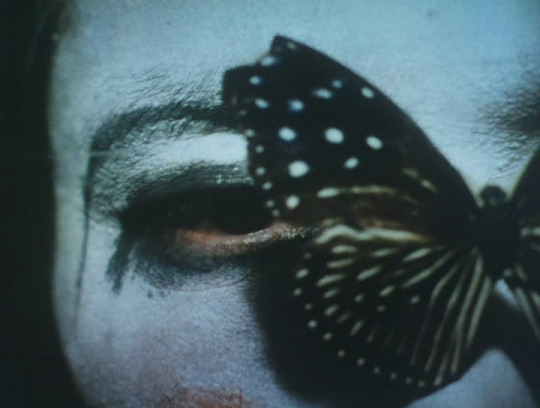
In the heady and extremist Japanese art scene of the late ‘70s, Terayama created a number of unforgettable and highly controversial short films. This is a short movie Terayama’s Experimental Image World.
youtube
929-10-5 https://youtu.be/_xFTQ139eF8
6. LABYRINTH TALE (1975)
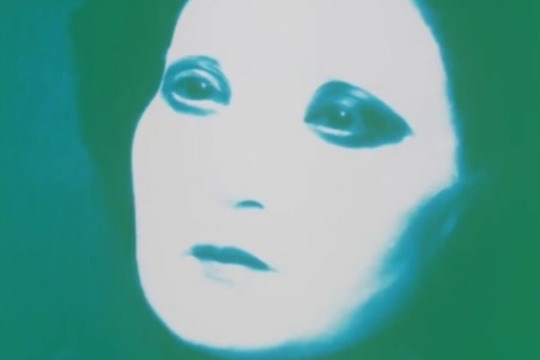
Two men carry a portal door which leads to different realms.
youtube
929-10-6 https://youtu.be/2E0E0vYKA9Q
7. THE ERASER (1977)
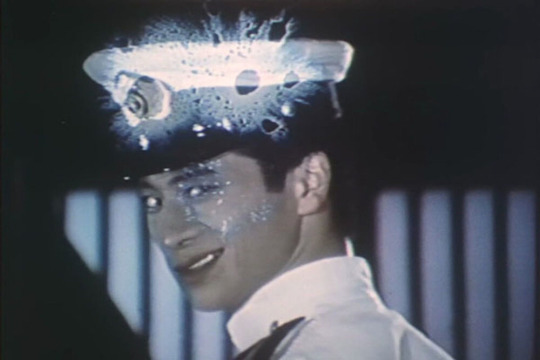
Visions of characters by the seaside from one’s memory are erased by the filmmaker’s hand.
youtube
9259-10-7 https://youtu.be/c4cSbZC0UPk
8. MARUDORO NO UTA (1977)

A “reading film” of delirious image and text, Les chants de Maldoror takes its title and inspiration from Comte de Lautréamont’s 1869 proto-Surrealist poetic novel which, for instance, describes beauty as the chance encounter of a sewing machine and an umbrella on an operating table. In the novel’s six cantos, a young misanthrope indulges in depraved and destructive acts.
youtube
929-10-8 https://youtu.be/SLTj6ZsJN9Y
9. PRIVATE COLECCTIONS (1979)

A film composed of three stories. In the first one, a castaway arrives on a paradise island and finds a half-naked, playful and complacent woman. In the second, a teenager tries to remember the lyrics of a lullaby, which leads to sexual and oedipal fantasies. In the third, a rich man in 19th century Paris hires a prostitute for one night.
929-10-9
10. VIDEO LETTER (1982)

Video Letter is a strange and unsettling film that records a correspondence by videotape between Shuji Terayama and his acquaintance, the famous modern poet, Shuntaro Tanikawa.
929-10-10 https://ok.ru/video/2856731413018
0 notes
Text
What Does Poetic Justice Mean: A Deeper Understanding
Poetic Justice: Unraveling the Deeper Layers
Exploring the Concept
What Does Poetic Justice Mean?
Poetic justice is a literary and philosophical concept that revolves around the idea of the moral or appropriate consequences for characters based on their actions. In essence, it is the idea that virtue is ultimately rewarded and vice is punished in a manner that is fitting and apt within the narrative context.
The Role of Fate and Destiny
Poetic justice often involves an element of fate or destiny, where characters reap what they sow, guided by a cosmic or narrative force that ensures a balance between actions and consequences. This concept transcends mere cause-and-effect relationships, diving into the realm of storytelling morality.
Literary Applications
How is Poetic Justice Employed in Literature?
Authors often use poetic justice as a narrative tool to bring a sense of closure and satisfaction to their stories. It adds a layer of meaning and purpose to the events within the narrative, reinforcing the moral framework of the literary work.
Examples in Classic Literature
Classic literature is rich with examples of poetic justice. In Shakespeare's "Hamlet," the characters face the consequences of their actions in a tragic but poetically just manner. Similarly, in Victor Hugo's "Les Misérables," the characters' destinies are intricately tied to their moral choices.
Cinematic Interpretations
Is Poetic Justice Limited to Literature?
No, the concept extends to various forms of storytelling, including cinema. In films, characters often undergo a journey that leads to consequences aligned with their actions, providing audiences with a satisfying and meaningful resolution.
Modern Cinematic Representations
Contemporary movies frequently incorporate poetic justice. Whether it's the redemption of a flawed protagonist or the downfall of an antagonist, filmmakers employ this concept to create emotionally resonant and thematically impactful narratives.
Philosophical Underpinnings
What Philosophical Ideas Support Poetic Justice?
Poetic justice aligns with various philosophical perspectives, including moral absolutism and consequentialism. It reflects the belief that actions have inherent moral value and that the universe, whether guided by divine forces or narrative design, seeks equilibrium.
Criticisms and Alternatives
While poetic justice provides a sense of order and closure, some critics argue that life doesn't always follow such neat patterns. Other narrative devices, like tragic irony or unresolved endings, offer alternative ways to convey the complexities of the human experience.
What Does Poetic Justice mean Specifically?
Poetic justice involves the idea that characters within a narrative face moral consequences aligned with their actions, where virtue is rewarded and vice is punished in a manner fitting within the story's context.
What Does Poetic Justice Mean to Fate and Destiny?
Poetic justice often incorporates elements of fate or destiny, suggesting a cosmic or narrative force that ensures a balance between characters' actions and their ultimate outcomes.
How is Poetic Justice Used as a Narrative Tool in Literature?
Authors utilize poetic justice to provide closure and satisfaction in their stories. It serves as a mechanism to reinforce the moral framework of the literary work, creating a sense of order within the narrative.
Can You Provide Examples of Poetic Justice in Classic Literature?
Classic literary works, such as Shakespeare's "Hamlet" and Victor Hugo's "Les Misérables," are replete with instances of poetic justice where characters face consequences aligned with their moral choices.
What does Poetic Justice mean to Cinematic Storytelling?
Absolutely. Poetic justice is a concept widely employed in cinema. Characters in movies often experience consequences in line with their actions, contributing to emotionally resonant and thematically impactful narratives.
What Does Poetic Justice mean in Modern Cinematic Representations?
Contemporary films frequently incorporate poetic justice to shape the destinies of their characters. Whether through the redemption of protagonists or the downfall of antagonists, filmmakers use this concept to enrich their narratives.
Read more about what does poetic justice mean
Looking for the place where this picture was taken?
Comment on our instagram and we will reply.

Read the full article
0 notes